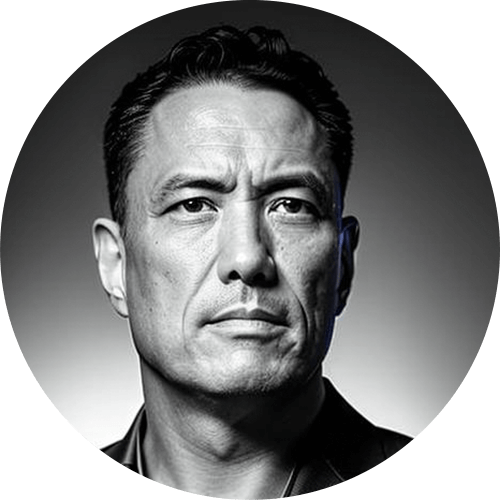Re-Inventing Learnification and Knowledge Collaboration: An Interview with Dr. Eran Gal
For this blog post, we interviewed Dr. Eran Gal, a Learnification expert. Dr. Gal has over sixteen years of experience with enterprises, helping them define, set and accomplish goals, as well as publishing research papers and lecturing at the Holon Institute of Technology.
We asked Dr. Gal to share his insights about what motivates employees, what types of gamification work better than others and what obstacles a company might confront when implementing gamification. Since Dr. Gal is an e-Learning expert, the focus of the interview was on Learnification. Learnification means using Gamification techniques for the purposes of training or employee on-boarding; the use of game mechanics promotes learning, review of materials and encourages a sense of completion. It also provides clear calls-to-action during the process of learning, and is more effective than traditional methods. By creating inherent incentives to learn, implementation of learnification projects promotes better employee knowledge and satisfaction.
What is your definition of Gamification?
Gamification is the use of game-like motivation mechanics in order to produce employee engagement in certain procedures. My focus is the procedure of learning for the purposes of training employees. The industry is moving from basic competitive games between individuals to more elaborate role-play games, which require team-work and cooperation. These gamified elements mimic complex real-life processes.
What do you think is the main challenge of Learnification?
Every Learnification model that exists today has to reinvent its relevance to the organization. Employees today are younger, tech savvy, self-conscious and have a lucid picture of where and how they want to be positioned in the future. The organization on the other hand is productivity biased and needs Learnification to support its goals; it cannot allow the Learnification process to become a disconnected, stand-alone process.
So that’s why gamification is becoming more social and team-oriented?
Social and team gamification come from the understanding that the individual can’t accomplish many corporate tasks, including learning and training, alone. Many companies discover that when an employee has to go through their long training procedure all alone, the company has to invest significantly more, both moneywise
Employee motivation has two parts to it: One aspect is that the employee should be having fun, enjoy himself and be interested in the process; the other, is that the employee must feel that the process genuinely contributes to their day to day work, that it has an added value to getting the job done. The game element is therefore very significant, if done correctly. It is what makes people more engaged and more aware of the process.
How would you describe employees’ willingness to participate in the process of Learnification?
The question is “participate in what”. What is the experience of the employee? Is it an experience of an assignment that has to done, or one of play? Is it external to the work process or interwoven with it? The issue is definitely whether the employee sees the process as relevant to their work. The other element, equally important, is for the manager to recognize the process as such. In the case that one of these conditions is not met, we may encounter antagonism, a cynical attitude or a lack of cooperation. In this case, even if you wrap it up with organizational tools, the process is doomed to fail. So the most important thing is to apply a process which is relevant to the employees and improves the organization’s performance.
For example, implementing some sort of knowledge collaboration that the worker will either produce or use or both, should support the employee’s work routine. The best way to create knowledge collaboration is gamification. You must produce relevance, but nevertheless, you must wrap it in a way which will make people emotionally attached to the process. It depends on how well you design the gamification solution. Nowadays, if you design a solution which is too obvious, it quickly wears out. A gamification solution which is continuous, personal and intelligent has a chance of surviving and lasting for a longer time as a useful corporate tool.
If you were to advise an HR Manager or Sales Manager to purchase a gamification platform, what would be most important for him/her to look for?
The system has to live in the organization: it has to be integrated easily, in the technical sense. Then, it has to fulfill a vision the organization wishes to enhance. It has to express a specific goal – to motivate employees to participate in a learning process, or evaluation process, on-boarding, improve KPIs etc. The manager would have to make sure that the system provides the right tools.
In your experience –where is gamification is most effective?
Gamification works great with informal learning procedures. Obviously, in courses and in formal training the employee is bound to learn; but throughout the everyday work routine, the effectiveness of gamification is significant to the learning process. When I have to get out of my routine, it has to be for a good reason: it has to be interesting, or fun, “to see how I perform”, “how I perform compared to others”. This is where the social element comes into play and makes a difference in the quality and quantity of learning.
Games are often driven by competition and yet call for team work. How would you balance competition vs. cooperation?
The question is what is more important for the organization. To improve performance, more competitive elements are required, where individuals compete with each other. When the target is a common goal, or a vision, then games involving team work have to be chosen. The decision has to optimize the organization’s productivity. Basically, different parameters can achieve different results. The optimum is to apply game mechanics in a way that challenges the most employees, in a manner that fits their abilities.
You can build a game mechanic with an essence of sharing. This isn’t simple, because competition is perceived as an individual issue and not as a unifying force. When you build a team process, you have to group-motivate the employees. You have to be very aware as to what are the connecting dots between the people. I never witnessed cases in which competition was so harsh, to the point it was destructive. However, it is important to monitor the process constantly in order to do damage control, or motivate on the spot. Additional sophistication can be profiling of the participants and choosing the parameters accordingly, so no-one would feel left out, or that he or she doesn’t stand a chance since the same people always win. During the process prizes, bonuses, or change parameters can be added, in order to keep everyone engaged.
How do you address the gap between the customer (enterprise) that purchased a gamification solution, and the employee who is the end user?
When implementing a system, you must make sure it doesn’t treat the user (the employee) as a constraint. The programmers of the game must bear in mind not only the benefits to the organization, management, etc. but think constantly of the end user and how they are going to benefit from it. What is the KPI from the user’s point of view? There is never complete correlation, but it should be attempted.
Where do you stand with prizes and material awards?
It is a very problematic issue. I know cases where real prizes, whether an i-Pad or a dinner, brought the competitive component to undesirable levels. At the end of the day someone gets a prize, and if you are not that person, it damages your motivation. If I compare motivation to a locomotive, in some cases it runs so fast, that it could end up derailing. I have witnessed undesirable behavior while people tried to gain points. I know of people logging in with different names to send various emails to promote themselves, or other manipulations.
Basically, the person running the show should know if prizes are right for the specific company or whether they can generate exaggerated competition. It could be something material, but in that case it should be turned back to the team. Something like a joint dinner, or another collective activity. The thing to remember here is that a non-material reward is a reward nevertheless. However, it is important to be very clear about the reward. It should be designated and announced prior to the process; it should be something significant, out of the routine, which everyone in the organization acknowledges.
Many thanks to Dr. Gal Eran for taking part in this interview.
Engage and motivate your frontline teams
Improve performance with an AI-powered digital coach
Deliver world class CX with dynamic, actionable quality evaluations
Boost performance with personalized, actionable goals
Nurture employee success with the power of AI
Listen and respond to your frontline, continuously
Drive productivity with performance-driven learning that sticks
Drive agent efficiency, deliver client results
Keep tech teams motivated and proficient on products and services while exceeding targets
Maintain compliance while building customer happiness and loyalty
Enlighten energy teams to boost engagement
Engage, develop, and retain your agents while driving better CX
Improve the employee experience for your reservations and service desk agents



 Madeleine Freind
Madeleine Freind
 Natalie Roth
Natalie Roth Linat Mart
Linat Mart












 Doron Neumann
Doron Neumann Gal Rimon
Gal Rimon Daphne Saragosti
Daphne Saragosti Ella Davidson
Ella Davidson Ariel Herman
Ariel Herman Ronen Botzer
Ronen Botzer